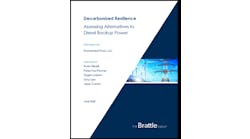If You Can’t Beat Them: Oracle Cloud Infrastructure Joins with Azure AI, OpenAI, Google Cloud
Image: Oracle Cloud regions, per the OCI Blog
According to Synergy Research group, total global cloud revenue in Q3 2023 was over $73 billion, with the top three providers, AWS, Microsoft Azure, and Google Cloud taking the lion’s share of that revenue (66%).
Oracle Cloud Infrastructure (OCI) -- which, depending on which analyst you ask, ranks either fourth, fifth, or sixth overall among providers -- accounted for only a 2% share of the market; yet that number still translates to $1.5 billion in revenue in that quarter.
Extrapolate that out across four quarters and OCI represents more than 10% of Oracle’s $49.95 billion in reported revenue for 2023.
That's why it came as no surprise when, in the company's earnings call for the fiscal Third Quarter of 2024, Oracle CEO Safra Catz revealed that OCI is looking at about $10 billion in capex investment through 2025.
That investment will be used for purposes of new data center construction and expansion of existing data centers, with plans to build 100 new facilities while expanding capacity 66 existing data centers, as previously reported by Globe Street and Datacenter Dynamics.
Oracle's Chief Technology Officer and Executive Chairman Larry Ellison upped the ante even further during his company's latest earnings call last week, declaring, "We are working toward a future where every one of Oracle’s customers could, if it wanted to, have its own Oracle Cloud data center inside that customer’s data center."
OCI Rising to Meet AI Road
When Nvidia made their Grace Hopper AI announcements in March of 2023, they also announced that the lead hyperscaler to offer their DGX Cloud would be OCI.
OCI offers a full range of Nvidia AI processors, for both bare metal and VM compute as both GPU instances, using the Nvidia A10 Tensor Core GPU, GH 200 Grace Hopper Superchip and GBNVL72 to enable AI inferencing and training.
OCI also offers their Supercluster GPU instances, which is bare metal compute using Nvidia A100, H100, H200 and B200 Tensor Core GPUs with the capability to scale up to 32, 768 GPUs.
This is a lot of AI horsepower -- so the announcement on June 11th that Open AI had selected OCI to extend its Microsoft Azure AI platform made a great deal of sense. As noted by DCD's Georgia Butler, "The move will increase OpenAI's capacity for training its large language model."
Sam Altman, Chief Executive Officer, OpenAI, said, "We are delighted to be working with Microsoft and Oracle. OCI will extend Azure's platform and enable OpenAI to continue to scale."
It should be noted that while Microsoft owns 49% of OpenAI, they reportedly do not exert any operational control over the generative AI pioneer.
The OCI AI infrastructure is purpose-built for building and training AI models, enabling cloud customers to work quickly anywhere within Oracle's distributed cloud.
Oracle's Chairman and CTO Ellison commented, "The race to build the world's greatest large language model is on, and it is fueling unlimited demand for Oracle's Gen2 AI infrastructure."
Pointing out that that there are thousands of AI users across multiple industries already using OCI AI, Ellison added, “Leaders like OpenAI are choosing OCI because it is the world's fastest and most cost-effective AI infrastructure."
OCI Also Partners with #3 Hyperscaler Google
Also on June 11th, OCI announced a “groundbreaking multicloud partnership” with Google Cloud, the world's number three ranked hyperscaler. The announcement entailed two new products, both of which are designed to allow customers of Oracle and Google to make use of leading technologies from both providers.
The first product will be the Google Cloud Cross Cloud Interconnect. This will enable customers to take their general-purpose workloads across both clouds with no cross-cloud interconnect charges.
Oracle's Ellison said, "Customers want the flexibility to use multiple clouds. To meet this growing demand, Google and Oracle are seamlessly connecting Google Cloud services with the very latest Oracle Database technology. By putting Oracle Cloud Infrastructure hardware in Google Cloud datacenters, customers can benefit from the best possible database and network performance."
Later in 2024, customers will gain access to the highest levels of Oracle database and networking performance with the Oracle Database@Google Cloud. This will be the Oracle cloud infrastructure deployed to Google Cloud data centers.
Said Sundar Pichai, CEO of Google and Alphabet, "Oracle and Google Cloud have many joint enterprise customers. This new partnership will help these customers use Oracle database and applications in concert with Google Cloud's innovative platform and AI capabilities."
Per Synergy Research, Google, while the third ranked hyperscaler in terms of revenue, had only one third the market share of industry leader AWS and less than half the market share of Microsoft Azure.
Therefore, a partnership that could bring OCI customers into the Google environment is a solid win, while OCI being able to take advantage of the global scale of Google data centers would seem to bring significant cost-savings to OCI as they expand their footprint and availability.
Reporting on June 12, Yahoo Finance noted that Oracle (ORCL) shares were rising after the company announced cloud deals with Google and OpenAI.

David Chernicoff

Matt Vincent
A B2B technology journalist and editor with more than two decades of experience, Matt Vincent is Editor in Chief of Data Center Frontier.






